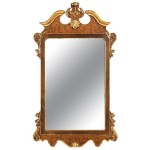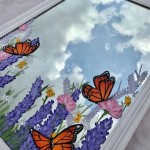Hanging Heavy Frameless Mirrors Securely
Frameless mirrors offer a sleek, modern aesthetic, but their lack of a traditional frame presents unique challenges when hanging, especially with heavier pieces. Proper installation is crucial not only for aesthetic appeal but also, and more importantly, for safety. This article outlines the essential steps and considerations for securely hanging a heavy frameless mirror.
The first step involves accurately assessing the mirror's weight. Bathroom scales are generally sufficient for smaller mirrors. However, for larger, heavier mirrors, it's advisable to use a heavy-duty scale capable of handling the anticipated weight. Knowing the precise weight informs decisions about the appropriate hanging hardware and installation method.
Choosing the right hanging hardware is paramount for safety and stability. Several options are available, each suited to different weights and wall types. J-hooks, often used for lighter framed mirrors, may be inadequate for heavy frameless mirrors. Instead, consider using heavy-duty D-rings, French cleats, or mirror clips designed specifically for frameless installations. These options offer superior weight distribution and a more secure hold.
Before purchasing hardware, identify the wall type. Drywall requires different anchors and fasteners compared to concrete or brick. For drywall, toggle bolts, molly bolts, or heavy-duty drywall anchors are recommended to provide adequate support. Concrete or brick walls generally require masonry anchors and appropriate drill bits designed for these materials. Consulting with a hardware professional can be helpful in selecting the correct hardware for specific wall types and mirror weights.
Proper placement and marking are essential for a level and secure hanging. Determine the desired mirror height and mark the wall accordingly. Use a level to ensure the markings are perfectly horizontal. Then, measure the distance between the hanging hardware on the back of the mirror. Transfer these measurements to the wall markings, again using a level to ensure accuracy. Precision in this stage prevents crooked hanging and potential instability.
Installing the chosen hanging hardware requires careful attention to manufacturer instructions. For D-rings, ensure they are securely attached to the back of the mirror using appropriate screws and adhesives. For French cleats, one part of the cleat is attached to the wall, and the mating part is attached to the mirror. Mirror clips, typically installed in pairs, grip the edges of the mirror and are then secured to the wall. Regardless of the chosen method, follow the manufacturer’s guidelines precisely for optimal performance and safety.
After installing the wall anchors and hardware, carefully lift the mirror and engage it with the wall-mounted hardware. For D-rings, this involves hanging the rings onto the corresponding hooks. For French cleats, it involves carefully aligning and sliding the two cleat parts together. For mirror clips, the mirror is placed into the secured clips. Enlist assistance when hanging heavy mirrors to prevent accidents and ensure proper alignment.
Once the mirror is hanging, test its stability by gently applying pressure at different points. If the mirror feels secure and doesn't shift, the installation is likely successful. However, if there is any movement or instability, re-evaluate the hardware and installation method. It might be necessary to use stronger anchors or a different hanging system altogether.
Consider using adhesive in conjunction with mechanical fasteners for added security, particularly for very heavy mirrors. Mirror mastic, a specialized adhesive, can be applied to the back of the mirror before hanging. This helps distribute the weight and creates a stronger bond with the wall. However, remember that adhesive alone is not sufficient for heavy mirrors and must always be used in combination with appropriate mechanical fasteners.
Protecting the wall behind the mirror is a practical consideration. Bumpers or felt pads can be applied to the back of the mirror to prevent scratches and scuffs on the wall surface. These also help to cushion the mirror and reduce the risk of cracking or chipping.
Regular inspection of the hanging hardware and the mirror itself is advisable. Look for any signs of loosening, wear, or damage. Tighten screws or replace any worn components promptly to maintain a secure and safe installation. Over time, vibrations and environmental factors can affect the integrity of the hanging system, making regular checks an essential part of mirror maintenance.

How To Install A Mirror Without Frame Merrypad

How To Install A Mirror Without Frame Merrypad

How To Hang A Frameless Mirror On The Wall With Pictures

How To Install A Mirror Without Frame Merrypad
:strip_icc()/DesireeBurnsInteriors1-f76d25cad90041c88fbae4a7dc10aab4.jpg?strip=all)
2 Simple Ways To Hang A Frameless Mirror

How To Hang A Large Or Heavy Mirror

How To Hang A Heavy Mirror C R F T

How To Install A Mirror Without Frame Merrypad

How To Hang A Heavy Mirror Diy Family Handyman

Hanging A Heavy Mirror Without Frame Tiktok Search








